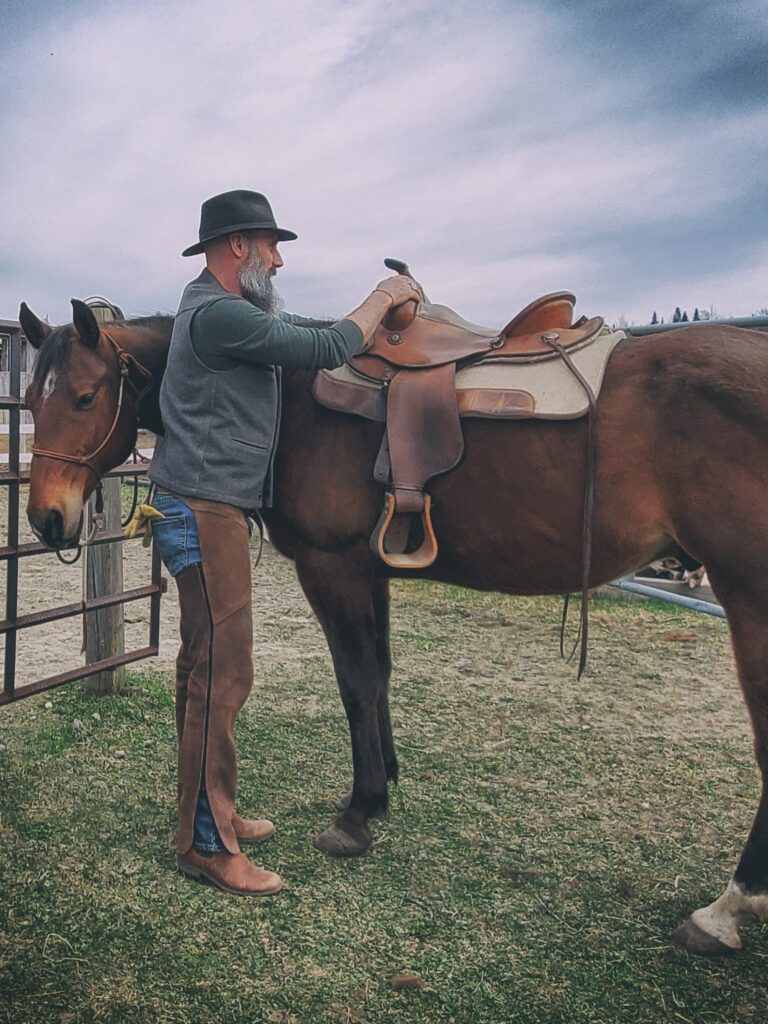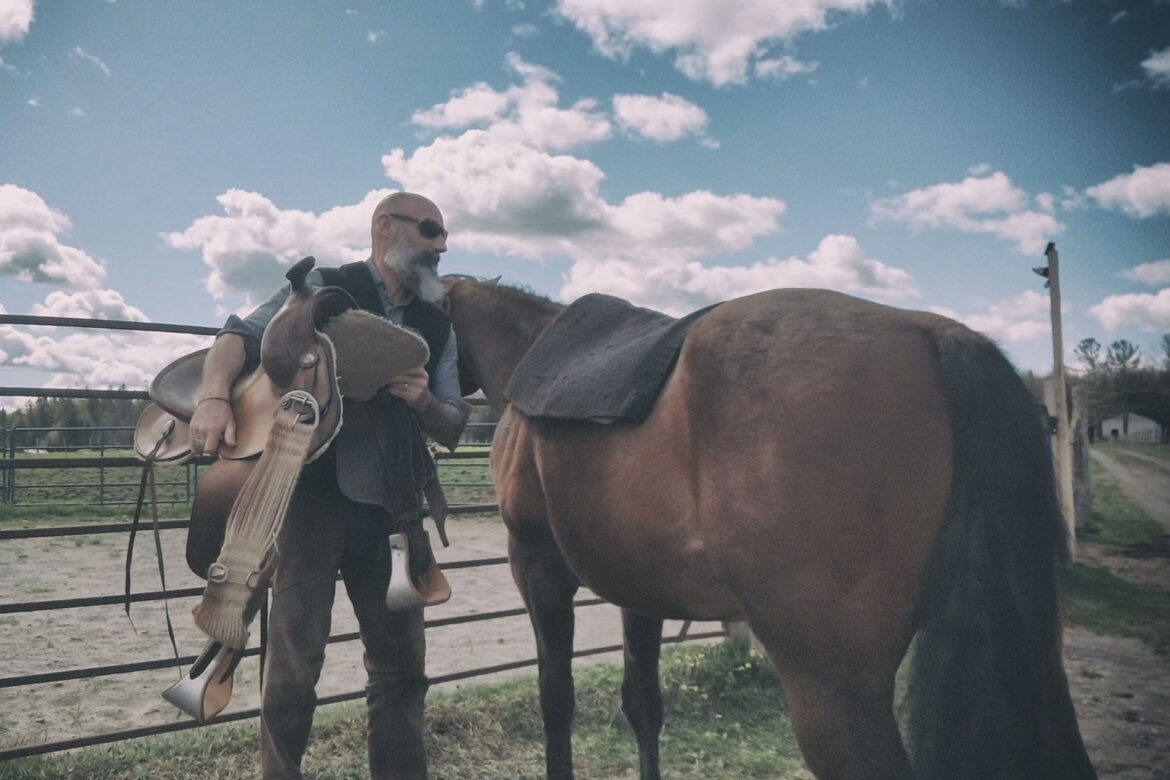A gentle method to desensitize your horse to the pad or blanket, and to the saddle, in order to keep it calm and relaxed.
Table of Contents
Unfortunately, most of the time, classic horsemanship leaves no place to such desensitizing, which eventually leads to problem horses: Fidgety horses, animals moving when you come with the saddle, others biting when you cinch up, and so on. There are three steps in desensitizing a horse to the saddling process: The pad, the saddle, and the cinch.
All the time you will spend to do the following work with your horse is an investment that will be rewarded a hundred times. Think about that: You will ride your horse for more than fifteen years, so what about spending a couple of hours to get him used to such important pieces of equipment?
Education principles:
1 ) Horses learn when you release pressure.
2 ) Timing is essential to good horsemanship, recognize the signs of relaxation to make sure you release right on time: Blinking eyes, lowering the head and neck, chewing mouth, cocking a hind leg.
If you work with a very green horse, or if you start a colt, make sure you have been through the Fundamental Groundwork first. You want your horse to be respectful, and to trust you when you approach him with a pad or a saddle. In any case, always keep the horse in a halter and lead rope that you will hold. Do not tie your horse as we want him to feel at ease, he should have the possibility to move around, even though we want to teach him to remain still and calm. Remember one of the natural horsemanship principles: make the right thing easy, and the wrong thing difficult… but not impossible!
Saddle pads and blankets
The process is quite simple: pressure and release. First, introduce the pad or the blanket to your horse. Consider the following: How would you like your riding teacher coming behind you, and throwing a helmet on your head without any warning? It would be quite surprising, probably unpleasant. So, position yourself in front of your horse, and approach gently the pad or the blanket, say 20-30 cm (1’) away from his nose. From there, let your horse do the work: He will analyze, then get closer step by step, smell, and maybe taste the blanket. Once he went through that process, you can move to his flank.
Some horses will start to walk in order to move away from the pad, do not rush, just keep walking toward his flank, holding the pad. Bring it close enough so you just touch your horse with the tip of the blanket. As soon as your horse stops and shows one of the relaxation signs, take the pad away, and pet your horse.
Repeat the process until your horse stands still when you raise the blanket over his back, then lay the pad down, and shake it on your horse’s back. That will probably make him walk and move away: remain consistent, keep shaking the pad until your horse stops, calms down, and shows a sign of relaxation. Pretty soon you will be able to throw the blanket over his back, and shake it firmly without a problem.

Saddles
Same approach: bring the saddle close to your horse’s nose, and let him explore. Remember to consider your horse’s point of view. Then, move to his flank and repeat the slow process, slightly touching him with the saddle. Once your horse stands still and relaxed, you can put the saddle on his back.
“I want to strap some hide of other dead animals around you before I crawl on you” […] it’s gotta to believe in you to let you do that!”
→ Buck, Buck Brannaman
Make sure you prepare yourself for success: hold the saddle in a comfortable position so you do not drop it, stirrups and girth should be fold over the saddle so nothing will interfere when you put the saddle on. Once the saddle is on his back, your horse might walk or move away from you. Walk with him and let him stop, do not try to stop him.
After a while, the horse will stop, calm down, and show one of these relaxation signs: that will be the exact moment when you should take the saddle off! Repeat the process, every time leaving the saddle a little longer, petting and rubbing the horse once the saddle is on. Pretty soon, your horse will know that when you come with the saddle, he has to remain still in order to receive a big hug, and he just loves that!
Cinches and girths
The last step of the saddling process is to fasten the cinch or the girth around your horse. When starting a colt, you should prepare him to that pressure around the belly. See how to desensitize a horse to the rope. After this desensitizing process, your horse will accept a lot faster the girth to be tightened up around his belly.
Yet, I strongly advise to take the habit to consider that nothing is acquired for sure! So, take a few seconds to pull gently on the cinch, and wait for a relaxation sign, then release and pet your horse. Doing so two or three times before EVERY saddling will educate your horse to remain as still as a statue when you saddle him.
For cinchy horses, I invite you to read the following article: How to fix a cinchy horse? You will eradicate the problem in no time!
